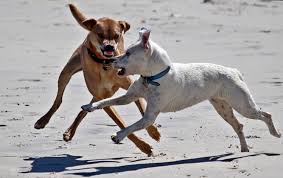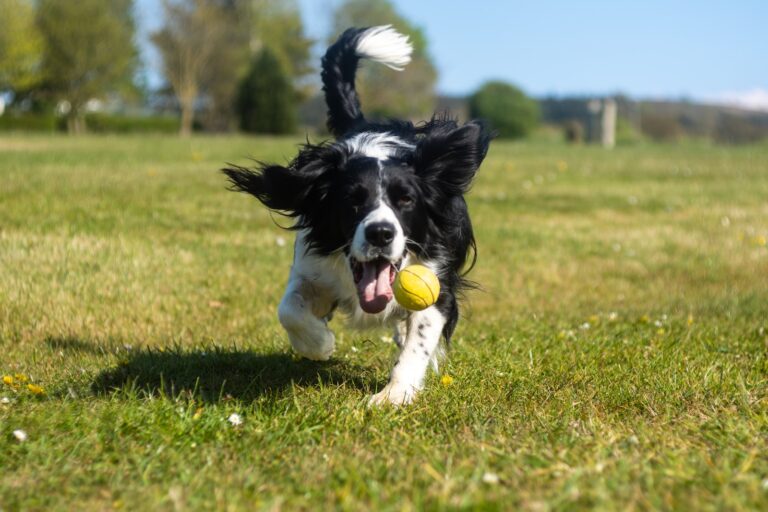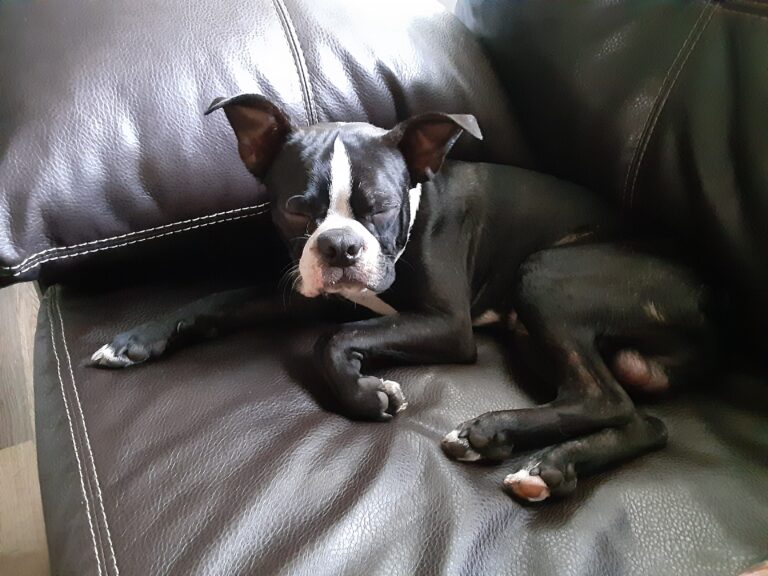How to separate a dog fight
Separating a dog fight can be risky, as dogs can become highly agitated and potentially bite unintentionally. If you find yourself needing to separate dogs in a fight, follow these steps to do so as safely as possible:
Stay Calm: Dogs are sensitive to human emotions. If you panic or display fear, it might escalate the dogs’ aggression. Speak in a firm but calm voice to help manage the situation. Staying calm is a foundational principle when dealing with any dog-related situation, especially during a fight. Dogs are keen observers of human behavior and can pick up on your emotions. If you panic or show fear, the dogs involved in the fight may interpret it as a sign that there’s something truly threatening or dangerous happening. This can intensify their own stress and aggression, making the situation worse. When you remain calm, you send a message to the dogs that everything is under control and that there’s no immediate danger. Your demeanor can have a calming effect on them. Use a firm but composed voice to command attention. Speaking in a calm manner can also help you maintain your own composure, allowing you to think more clearly and make informed decisions. Furthermore, if there are other people present, instruct them to stay calm as well. A group of panicking people might agitate the dogs further. By keeping everyone composed, you’re creating a more controlled environment in which you can manage the situation more effectively. Remember that your goal is to de-escalate the situation, and your attitude plays a significant role in achieving this. Your calm presence can serve as a reassuring influence for both your own dogs and the dogs involved in the fight.

Don’t Use Your Hands: Refraining from using your hands to physically separate dogs during a fight is crucial for both your safety and the dogs’ well-being. Even if the dogs are generally well-behaved and familiar with you, the intense energy and adrenaline during a fight can trigger instincts that override their usual behavior.
Here’s why avoiding direct physical intervention is so important:
Risk of Bites: Dogs in a fight can be highly reactive and may perceive any intervention, even well-intentioned, as a threat. This could lead them to bite, even if they wouldn’t normally do so. In the midst of the chaos, they might not distinguish between your attempt to help and the perceived threat.
Redirected Aggression: Dogs can experience redirected aggression when their intended target is not accessible. If you attempt to physically intervene and get bitten, their aggression could inadvertently be redirected towards you, exacerbating the situation.
Increased Panic: Using your hands might startle or agitate the dogs further. Panicking dogs can become more unpredictable, increasing the risk of injury to you or themselves. Instead of using your hands, consider employing alternative methods, such as creating a barrier or using loud noises, to interrupt the fight.
These methods allow you to keep a safe distance while minimizing the risk of getting bitten. Your priority is to ensure that everyone involved remains as safe as possible and that the dogs are separated without causing further distress.
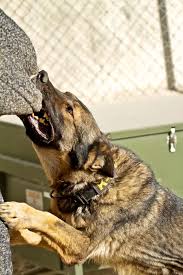
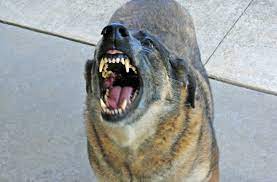
Make Loud Noises: Utilizing loud noises to intervene in a dog fight is a valuable technique that capitalizes on dogs’ heightened sensitivity to auditory cues. Dogs have acute hearing and can be startled by sudden, unexpected noises. Employing this approach can help divert their attention from the fight and create a temporary pause in their aggressive behavior. Dogs are attuned to changes in their environment, especially loud and unexpected sounds. When you shout, clap your hands, or use a whistle, you introduce a novel stimulus that momentarily grabs their attention and surprises them. The loud noise serves as a disruption to their ongoing aggressive interaction. It can momentarily break their concentration and redirect their focus away from the fight. The brief pause in their actions allows you to step in and separate the dogs more easily. This small window of distraction can be crucial in preventing the fight from escalating further. Utilizing loud noises allows you to intervene from a safe distance, reducing the risk of getting caught in the fray. It’s a non-physical way to influence their behavior without putting yourself in harm’s way. When employing this technique, remember to be forceful but not aggressive. Your goal is to startle the dogs, not to frighten them further. Keep your own safety in mind while using this method, and be prepared to follow up with other strategies to separate the dogs and ensure their well-being.
Spray Water: Using water to interrupt a dog fight can be a valuable and non-harmful technique. Dogs generally have a natural aversion to water, and the unexpected sensation can momentarily distract them from their aggressive behavior. This method involves creating a barrier of water between the dogs to break their focus and provide a brief opportunity for separation. The sudden sensation of water surprises and startles the dogs, momentarily disrupting their attention from the fight. This break in focus allows you to intervene and create distance. By spraying water between them, you’re introducing a physical barrier that encourages them to step back from each other. This serves as a sensory disruption, encouraging them to rethink their actions. This method enables you to influence the situation from a distance, allowing you to maintain your safety while using the water to separate the dogs without direct physical interaction. It’s a remote way to intervene that doesn’t cause harm but serves as a deterrent to their behavior. To use this method effectively, ensure you have a ready water source nearby, such as a hose, bucket, or spray bottle. Aim the water carefully at a spot that creates a barrier between the dogs, like the ground or the space between them. Avoid aiming the water at their faces to prevent causing undue stress. As with any intervention, observe how the dogs react. If one dog becomes more agitated, consider using an alternative method. After using water to interrupt the fight, take additional steps to prevent further conflicts and address the underlying causes of aggression. Remember, the primary goal is to ensure everyone’s safety while managing the situation as calmly and effectively as possible.
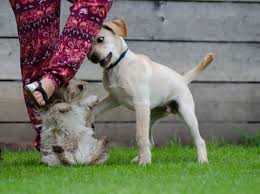
Create a Barrier: Introduce an object, like a large board or piece of furniture, between the dogs. This physically separates them and provides an opportunity for them to pause. Creating a barrier between dogs involved in a fight is a strategic approach that introduces a physical separation to momentarily defuse the situation. This method utilizes objects such as a large board, piece of furniture, or even a barrier you can construct quickly. By placing an obstacle between the dogs, you’re aiming to break their focus and create a temporary pause in their aggressive behavior. The idea behind this technique is multi-fold: interruption of interaction, forced distancing, and safety and control. Placing a barrier directly between the dogs interrupts their visual and physical interaction. This pause allows them to momentarily reassess their actions and reduces the immediate tension. By physically separating the dogs, you’re effectively creating a distance that discourages further confrontation. The presence of the barrier encourages them to reevaluate the situation. Additionally, introducing a barrier can provide you with a safer opportunity to assess the situation, plan your next steps, and possibly introduce other interventions if necessary. When using this method, consider using an object that’s large enough to prevent direct contact between the dogs but not so large that it causes additional stress or fear. Ensure the barrier is stable and won’t topple over, which could agitate the dogs further. Approach the dogs slowly and confidently with the barrier, avoiding sudden movements that might escalate their behavior. Be cautious, as the dogs might redirect their aggression towards the barrier or towards you. Remember, the aim is to separate the dogs temporarily to provide a window for the situation to de-escalate. After introducing the barrier, continue to monitor the dogs’ behavior and be prepared to take further steps to ensure their safety and your own.
Use a Blanket or Jacket: Throwing a blanket or jacket over the dogs can create a sensory distraction. This can obstruct their view and temporarily halt the fight. Using a blanket or jacket to intervene in a dog fight involves throwing the cloth over the dogs to create a sensory distraction. The sudden covering of their vision can startle them, momentarily interrupting their focus on the fight. This method capitalizes on their natural response to sudden changes in their environment. When you throw a blanket or jacket over the dogs, it serves as a barrier that blocks their view of each other. This obstruction temporarily halts their interaction, forcing them to react to the sudden change in their surroundings. It’s an approach that takes advantage of their instinctual response to unexpected stimuli.
The key benefits of this method include:
1. Visual Disruption: Covering the dogs’ field of vision disrupts their line of sight, which is often a trigger for continued aggressive behavior.
2. Sensory Change: The sudden sensation of the cloth landing on them can cause them to pause and reassess the situation.
3. Safe Intervention: Using a blanket or jacket allows you to intervene without physically getting in between the dogs, reducing the risk of bites.
When employing this technique, act swiftly to cover the dogs’ vision while being mindful of your own safety. Throw the cloth from a safe distance to avoid accidentally getting caught in the scuffle. Maintain your composure and stay as quiet as possible to avoid further agitating the dogs. After using this method, observe how the dogs react. If they remain calm under the cover, you can take this opportunity to separate them. Keep in mind that this method might not work for every situation, so always prioritize safety and consider alternative interventions if needed.
Leash or Collar Grab: If one dog has a collar, carefully grab the collar and move them away. Be cautious of their head and mouth to avoid being bitten. The leash or collar grab technique presents a practical way to intervene in a dog fight, particularly when one of the dogs is wearing a collar. This approach involves confidently and carefully grabbing the collar of one of the dogs and using it to guide them away from the altercation. While effective, it demands precise execution to ensure the safety of all parties involved. Before attempting this method, it’s important to assess the situation and determine whether it’s appropriate. If the dogs are exhibiting high levels of aggression or if the situation seems too volatile, it might be best to consider alternative approaches. When using the leash or collar grab technique, choose the dog with a collar as your target for intervention. This collar serves as a point of control that can be utilized to steer the dog away from the fight. Approach the targeted dog with a mix of confidence and calmness. Sudden movements could exacerbate the situation, so it’s important to maintain a composed demeanor. As you reach for the collar, be cautious around the dog’s head and mouth to avoid potential bites. The aim is to establish a firm grip on the collar without getting too close to the dog’s potentially agitated mouth. Once you have secured the collar, lead the dog away from the confrontation in a gentle yet assertive manner. Maintain a safe distance between yourself and the fighting dog to minimize any potential risks. If you’re alone and the situation seems particularly intense, consider seeking assistance from another person to manage the other dog while you focus on guiding the dog with the collar. Throughout this process, closely observe the reactions of both dogs. Ensuring that the dog you’re guiding away does not redirect aggression towards you is crucial for everyone’s safety. While the leash or collar grab technique offers a direct means of physical separation, it’s vital to approach with caution and prioritize safety. If the dogs are unfamiliar with you or if the situation feels overwhelming, consider this method only if you’re confident in your ability to carry it out safely. In all cases, the main objective is to prevent harm and defuse the situation in a secure manner. Always keep safety as your top priority, both for yourself and for the dogs involved. If you feel unsure about intervening or if the situation is beyond your control, it’s advisable to seek help from a professional.
Distract with Treats: Distracting dogs with treats is a strategic technique where treats or food are tossed away from the fighting dogs to leverage their natural instinct to pursue the rewards. This approach capitalizes on their inherent response to food, redirecting their attention momentarily from the conflict. By creating a positive association with treats, this method aims to reduce tension and provide a chance for safe separation. It allows remote intervention from a distance, utilizing the dogs’ pursuit of treats to create an opportunity for defusing the situation. Careful treat selection and safe tossing are crucial, and close observation of the dogs’ reactions ensures the efficacy of this method. Ultimately, the goal is to leverage their instinctual behavior to promote a temporary distraction that facilitates a secure resolution of the confrontation.
Two-Person Method: The two-person method is a collaborative and strategic approach that relies on the presence of two individuals who are confident and experienced in managing dogs, particularly in the context of a dog fight. This technique prioritizes safety for all parties involved and aims to provide a controlled and coordinated intervention that effectively separates the dogs. To execute this method, both individuals position themselves on opposite sides of the fighting dogs, approaching from behind to minimize the risk of further agitation. With a composed and steady demeanor, both interveners simultaneously grasp the back legs of the dogs. This synchronized action is aimed at preventing the dogs from gaining leverage or causing harm. By pulling gently but firmly in opposite directions, the two individuals create a balanced force that encourages the dogs to move apart. This technique takes advantage of the dogs’ natural response to pressure, making it a less confrontational way to diffuse the situation. The two-person method offers several key advantages. Firstly, it ensures a controlled and safe separation, reducing the risk of injuries to both the dogs and the interveners. The coordinated movement and balanced pressure also contribute to minimizing stress on the dogs, making it less likely for them to escalate their aggression. Additionally, the shared responsibility between the two interveners enhances the effectiveness of the intervention and provides mutual support during a potentially tense moment. One significant benefit of this method is the reduced physical risk to the interveners. By focusing on the dogs’ back legs, the chances of being bitten are significantly decreased compared to attempting to separate them by reaching for their heads or collars. Throughout the process, both interveners should maintain a calm demeanor, communicate effectively, and work together seamlessly. However, it’s essential to be aware that if the dogs’ behavior continues to escalate despite the intervention, it’s advisable to step back and consider alternative strategies or seek professional assistance. By employing the two-person method, the ultimate goal is to ensure the safety and well-being of everyone involved, including the dogs and the interveners. Through collaboration, clear planning, and careful execution, the two-person method offers an effective and secure means of managing a dog fight while maintaining a secure environment for all parties.
Safety First. Safety must be your utmost priority when intervening in a dog fight. If the situation involves dogs that are displaying intense aggression, it’s crucial to prioritize your own safety above all else. In cases where the dogs are extremely agitated, it’s advisable to wait for professional assistance rather than attempting to intervene on your own. Remember, your well-being is essential, and attempting to separate aggressive dogs without the proper skills and tools can put you at risk of injury. It’s essential to recognize your limits and exercise caution. Waiting for a professional, such as an animal control officer or a trained dog handler, is a prudent choice when dealing with highly aggressive dogs. In such situations, taking steps to protect yourself is not only reasonable but essential.
It’s important to bear in mind that the interventions mentioned earlier are designed to mitigate immediate harm in the event of a dog fight. However, the ultimate objective should encompass addressing the underlying causes of aggression and establishing strategies to prevent future altercations. While the immediate actions are vital, a comprehensive approach involves focusing on long-term solutions through training and behavior modification.
If your dogs have a history of aggressive behavior, seeking the expertise of a professional dog trainer or a behaviorist is highly recommended. These specialists possess the knowledge and experience to delve into the root causes of aggression, examining factors such as territorial behavior, fear, resource guarding, or socialization issues. By working with a professional, you can craft a tailored plan to address these underlying issues and implement targeted training techniques that encourage positive behavioral changes.
A professional’s guidance can be invaluable in developing a structured training regimen that aims to reshape your dogs’ responses and reactions. This approach focuses on teaching them alternative behaviors and coping mechanisms that are more desirable and non-aggressive. It’s essential to commit to the process and engage in consistent training to yield lasting results.
Remember that addressing aggression requires patience, commitment, and an understanding of your dogs’ individual personalities and triggers. Consulting a professional ensures that you’re equipped with the right tools and knowledge to make informed decisions about managing and modifying your dogs’ behavior effectively. By addressing the root causes of aggression, you not only improve the safety of your dogs and those around them but also enhance their overall well-being and quality of life.
